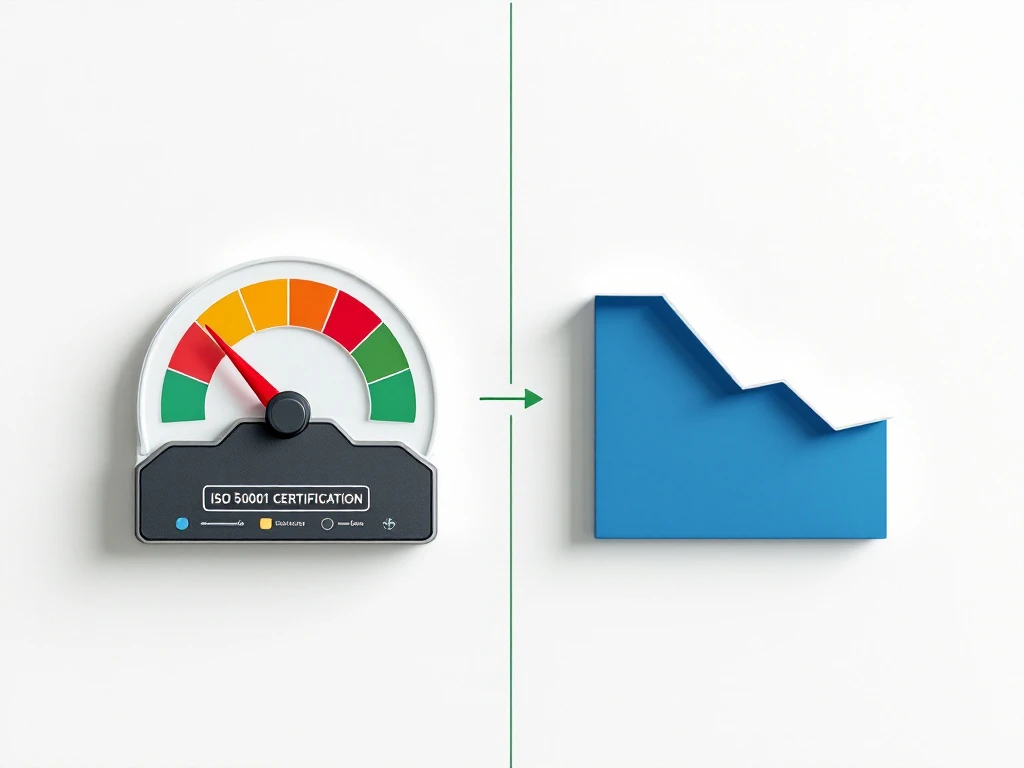
Andres Fellenberg Van der Molen
Director at Green Partner Europe | Hotels Specialist | Sustainability | Energy Efficiency | Circular Economy | Zero Waste | CSR | ESG | SDG

Does iso 50001 certification lead to significant energy cost savings?
Implementing ISO 50001 certification typically yields substantial reductions in energy expenditure for organisations across various sectors. This internationally recognised energy management standard provides a structured framework that enables businesses to systematically identify inefficiencies, implement improvements, and continuously monitor performance. While implementation costs exist, companies generally experience meaningful financial returns through reduced consumption, optimised energy usage, and improved operational efficiency. The certification process also positions organisations advantageously in increasingly sustainability-focused markets.
What is ISO 50001 certification and how does it work?
ISO 50001 is an internationally recognised standard that establishes a framework for implementing and maintaining effective energy management systems. This standard employs a systematic approach to help organisations continually improve their energy performance through efficient resource utilisation and reduction of energy waste.
The framework consists of several key components: energy policy development, planning for energy efficiency, implementation of energy-saving measures, performance evaluation, and management review. These elements work together to create a comprehensive system that addresses all aspects of organisational energy use.
The certification process typically involves several phases. Initially, organisations conduct an energy review to establish baseline performance. This is followed by setting objectives and targets, implementing action plans, and monitoring results. An accredited certification body then conducts an audit to verify compliance with the standard’s requirements.
At the core of ISO 50001 is the Plan-Do-Check-Act (PDCA) methodology. This cyclical approach ensures continuous improvement in energy performance through regular assessment and refinement of energy management practices. The PDCA cycle involves planning energy improvements, implementing changes, measuring results, and taking corrective actions—a process that drives ongoing efficiency gains over time.
How much can businesses typically save with ISO 50001 implementation?
Energy cost reductions from ISO 50001 implementation vary considerably across different organisations and sectors. Generally, businesses report energy consumption decreases ranging from 5% to 30% in the initial years after certification, with ongoing improvements as systems mature.
When examining industry-specific outcomes, manufacturing operations often experience the most substantial savings due to their energy-intensive processes. Heavy industry can see reductions of 10-20% in energy costs, while commercial buildings and service industries typically achieve 5-15% savings. The public sector organisations implementing the standard have reported average reductions of approximately 10% in their energy expenditure.
Financial benefits tend to follow a distinct pattern over time. Initial savings typically come from low-hanging fruit—simple operational improvements and behavioural changes. Medium-term benefits derive from systematic energy management practices and modest investments in efficiency measures. Long-term savings result from strategic equipment upgrades and deeply embedded energy management culture.
Several factors influence the potential savings an organisation might achieve, including:
- Current energy efficiency baseline
- Organisational size and complexity
- Level of management commitment
- Available resources for implementation
- Industry-specific energy usage patterns
What are the implementation costs of ISO 50001 certification?
The financial investment required for ISO 50001 certification varies based on organisational size, complexity, and existing energy management maturity. Understanding these costs helps businesses prepare adequately for the certification journey.
Consultancy fees typically form a significant portion of implementation expenses. Working with specialists in energy management systems can range from modest investments for small organisations to more substantial commitments for large enterprises. These professionals guide the development of compliant energy management systems and prepare organisations for certification audits.
Documentation requirements represent another cost centre. Organisations must develop comprehensive energy policies, procedures, and records. This process demands staff time and may require specialised software for energy data management.
Energy assessment expenses include baseline studies and energy audits to identify improvement opportunities. These assessments often require specialised equipment and expertise, adding to the overall investment.
Training represents a crucial investment area. Staff must understand the energy management system, their roles within it, and specific skills for energy performance monitoring and improvement. Training costs vary based on the number of employees and depth of knowledge required.
Finally, ongoing compliance investments include internal audits, management reviews, and surveillance audits by certification bodies. While these represent continued expenses, they should be viewed in context of the potential returns through energy savings. Learn more about Certification 50001 and how Green Partner can support your implementation process.
How long does it take to see ROI from ISO 50001 certification?
The timeline for achieving return on investment from ISO 50001 implementation varies considerably across organisations. Typically, businesses begin to see financial returns within 1-3 years of certification, though some report faster payback periods depending on their specific circumstances.
Several key factors influence how quickly organisations realise ROI:
- Initial energy efficiency baseline
- Scale of improvement opportunities identified
- Implementation resources allocated
- Management commitment level
- Energy price volatility
When comparing across business segments, manufacturing and industrial facilities often achieve the fastest payback periods due to their energy-intensive operations and greater potential for significant savings. Commercial buildings generally experience moderate timeframes, while service-oriented businesses might see longer periods before full cost recovery.
To accelerate financial returns, organisations can employ several effective strategies. Prioritising low-cost, high-impact improvements for initial implementation helps generate early savings. Setting clear performance indicators and regularly monitoring progress enables quick identification of successful initiatives. Integrating energy management with existing business systems reduces redundancy and implementation costs. Additionally, taking advantage of available energy efficiency incentives and rebates from utilities or government programmes can improve the financial equation substantially.
What challenges do companies face when implementing ISO 50001?
Organisations pursuing ISO 50001 certification typically encounter several common obstacles throughout their implementation journey. Resource constraints often top the list, as companies must allocate both financial and human resources to develop and maintain effective energy management systems. Many organisations struggle to balance these requirements with other operational priorities.
Technical expertise gaps present another significant challenge. Effective energy management requires specialised knowledge in areas such as energy auditing, performance measurement, and efficiency technologies. Smaller organisations particularly may lack in-house capabilities in these domains.
Organisational resistance to change can substantially impede implementation efforts. Employees accustomed to established processes may be reluctant to adopt new energy management practices, especially when these require behavioural adjustments or additional responsibilities.
Data collection difficulties frequently arise when establishing energy baselines and monitoring systems. Many organisations discover that their existing metering infrastructure is insufficient for the detailed energy performance analysis required by ISO 50001.
Integration challenges with existing management systems can create confusion and redundancy. Companies already operating with quality or environmental management systems must carefully align ISO 50001 requirements with these established frameworks.
Successful organisations overcome these obstacles through strategic approaches: developing phased implementation plans that match available resources, investing in targeted training programmes, engaging employees through clear communication about benefits, upgrading monitoring capabilities incrementally, and designing integrated management system structures that minimise duplication.
How does ISO 50001 compare to other energy efficiency programs?
When evaluating energy efficiency initiatives, organisations often consider how ISO 50001 stands alongside alternatives like LEED certification, Energy Star, and regional programmes. Each offers distinct approaches to improving energy performance, with important differences in scope, methodology, and focus.
LEED (Leadership in Energy and Environmental Design) primarily addresses building design and construction with energy efficiency as one component among broader environmental considerations. While LEED certification demonstrates green building credentials, ISO 50001 offers a more comprehensive approach to energy management across all organisational operations and activities.
Energy Star provides benchmarking tools and recognition for energy-efficient products and buildings but lacks the systematic management approach of ISO 50001. Where Energy Star excels at comparative performance assessment, ISO 50001 delivers a framework for ongoing improvement regardless of starting position.
Regional energy efficiency incentives often focus on specific technologies or short-term improvements. These programmes typically offer financial incentives for discrete projects rather than systemic changes. ISO 50001’s distinguishing feature is its emphasis on embedding energy management within organisational governance structures.
Many organisations find the most effective approach combines these programmes. For example, using Energy Star tools for benchmarking within an ISO 50001 framework, pursuing LEED certification for new facilities while implementing ISO 50001 across operations, or leveraging regional incentives to fund improvement projects identified through the ISO 50001 process.
ISO 50001 energy savings beyond direct cost reduction
While immediate energy cost savings often drive initial interest in ISO 50001 certification, organisations implementing the standard typically discover numerous additional benefits that enhance overall business value.
Enhanced corporate reputation represents a significant advantage in today’s sustainability-conscious marketplace. Customers, investors, and partners increasingly favour organisations demonstrating genuine commitment to resource efficiency. ISO 50001 certification provides credible, third-party verification of such commitments.
Regulatory compliance becomes more streamlined as organisations implement systematic energy management. Many jurisdictions are introducing mandatory energy efficiency requirements; ISO 50001-certified organisations often find themselves ahead of these regulatory curves, avoiding compliance scrambles and potential penalties.
Supply chain advantages emerge as large organisations increasingly scrutinise their suppliers’ sustainability credentials. ISO 50001 certification can provide preferential status in procurement processes, opening new business opportunities.
Greenhouse gas reduction achievements through improved energy efficiency contribute to climate change mitigation targets. Organisations can quantify and communicate these environmental benefits to stakeholders, supporting broader sustainability reporting.
Competitive positioning strengthens as energy management excellence translates to business resilience. Lower energy costs provide margin advantages, while systematic approaches to energy consumption reduce vulnerability to energy price volatility and supply disruptions. These benefits collectively enhance organisational sustainability in both environmental and economic dimensions.
ISO 50001 certification: Essential insights for your energy management journey
Pursuing ISO 50001 certification represents a strategic investment that yields benefits extending far beyond direct energy cost reduction. As organisations evaluate this path, several key insights can guide decision-making and implementation planning.
The value of certification lies not merely in the credential itself but in the systematic approach to energy management it establishes. Organisations that embrace the standard’s principles rather than simply pursuing compliance typically achieve the most substantial and sustainable results.
Practical implementation requires thoughtful planning and resource allocation. Successful organisations typically begin with thorough energy reviews, set realistic objectives, secure management commitment, develop necessary competencies, and establish robust monitoring systems before pursuing formal certification.
Realistic expectations regarding energy cost savings help prevent disappointment. While significant reductions are achievable, results vary based on starting efficiency levels, organisational complexity, and implementation effectiveness. Progressive improvement rather than dramatic overnight change characterises most successful programmes.
Organisational commitment at all levels—from executive leadership to operational staff—fundamentally determines long-term success. Energy management systems thrive when embedded in organisational culture and aligned with broader business objectives.
At Green Partner, we support businesses throughout their ISO 50001 journey, from initial assessment through implementation and ongoing improvement. Our approach combines technical expertise with practical guidance, helping organisations develop energy management systems that deliver sustained value. By partnering with experienced consultants, organisations can navigate the certification process efficiently while maximising both energy performance gains and business benefits.
